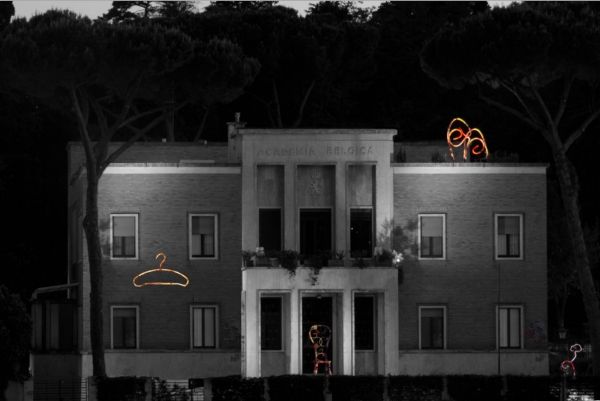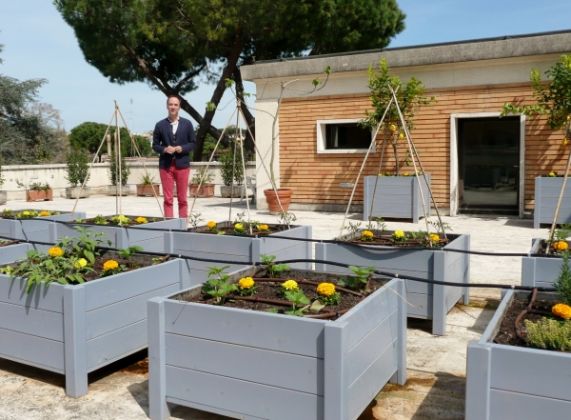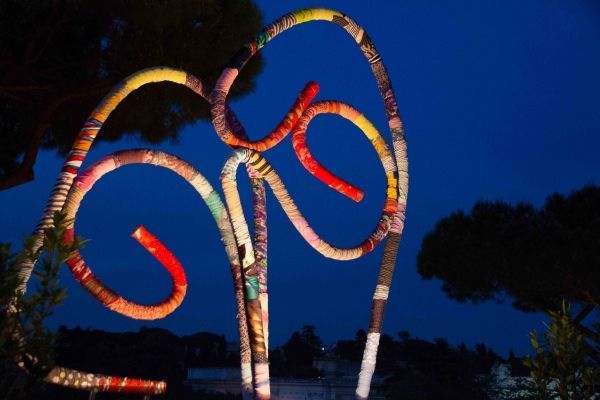Rome's Belgian Academy celebrates its 75th anniversary
When the Belgian Academy was inaugurated in Valle Giulia in 1939, it must have caused a stir for the sheer novelty of its design. Sandwiched among the grandiose neoclassical buildings of the other foreign academies, plus the Sapienza university's second faculty of architecture and the 19th-century National Gallery of Modern Art, the clean, unadorned front of the Belgian house of culture created – and still creates – a stark contrast with the edifices around it.
Its architects, the Italian Gino Cipriani and the Belgian Jean Hendrickx worked together to create a building in the new Rationalist style that would stand out for modernity and originality. Relations between Italy and Belgium had taken on a new importance since the king of Belgium's sister, Marie José, had married crown prince Umberto of Italy some nine years earlier in a glittering ceremony at the Quirinale Palace. On the occasion of her wedding, the princess donated money she had received as wedding presents to finance periods of study in Rome for young Belgian art historians and musicians through a scholarship scheme she created along with the Belgian education minister, Count Maurice Lippens, and eminent archaeologist Franz Cumont.
The National Foundation of Princess Marie-José (FPMJ) still functions today. The Academy, in fact, has 16 rooms to accommodate its Fellows, who stay for varying periods of study in an idyllic setting bordering on the Villa Borghese park. The biscuit-coloured façade, with its square white portico, conceals a cool and elegant reception hall designed by Hendrickx and sumptuously lined with Belgian marble, including the precious black marble mined by the ancient Romans. He also designed the furniture, made of African wood from the Belgian colonies in the Congo. The top of the marble stairway is adorned with a magnificent Flemish tapestry, one of six that the Academy possesses.
Director Wouter Bracke explained that these tapestries are period copies of the ones made for Cardinal Ippolito II D'Este, son of Lucrezia Borgia and creator of the Villa d'Este gardens at Tivoli. The academy was inaugurated in a spirit of hope and faith in the future, despite the looming menace of the war that was to break out very shortly after. Unfortunately, its activities were suspended practically before they had begun and the institute suffered a long period of neglect until an extensive renovation programme from 1997-2006 gave it back its former lustre.
The newest addition to the facilities is sure to prove popular with the fellows – the roof garden that Bracke is busy creating on top of the building: “I want to make an orto pensile where we can grow organic vegetables.” This garden is already being used for alfresco receptions where the fellows and guests can enjoy the splendid view. Bracke's passion for horticulture is only one of his many diverse interests. Previous posts include Curator of the Royal Library of Belgium in Brussels (one of the most important cultural institutions in the country, with a collection of four million bound works and a history that goes back to the Dukes of Burgundy), and Head of the Maps and Plans Department and Head of the Royal Library Map Room, which has 150,000 maps and plans dating back to the 16th century. “I got that job because of my Latin studies. All the old maps were written in Latin and I noticed that many people working in the cartography department didn't know much Latin, so my background was very useful.”
Bracke, in fact, is a Professor of Latin and Palaeography (the study of ancient handwriting and manuscripts) at the Université Libre de Bruxelles and spends his time between Rome and Brussels, where his wife and three children live. However, his links with Rome and the academy go back to his student days: “I first came here as a fellow in 1988-89. I studied Latin and Greek at the Sapienza university and researched my PhD at the Vatican library.”
The Belgian Academy can boast its own library, a spacious and restful art deco hall with alcoves framed by columns in cool mint green. Entering, you are immediately aware that this is the true heart of the house. Its collection of 60,000 books includes three prestigious private collections donated by leading Belgian scholars – the historian Henri Pirenne (1862-1935), art historian Pierre Bautier (1881-1962) and historian and archaeologist Franz Cumont (1886-1947), one of the founders of the FPMJ. The library, which is open for consultation every day, Monday to Friday, from 09.00-18.00, specialises in books about the Netherlands and relationships with Italy, such as the impact of Italian immigration in Belgium, bi-lateral relations and scientific cooperation, as well as treatises on art history, history of religion, classical philology, history of science (including astrology and astronomy), and Belgian-French literature and archaeology.
Belgian archaeologists, in fact, have made important contributions to excavations in Italy over the past 60 years. Today, seven Belgian universities have teams working on sites in Ostia Antica, Tuscany, Basilicata, Abruzzo and Marche.
This year, the Academia Belgica celebrates its 75th birthday with a series of cultural events. For details see its website
Margaret Stenhouse
This article first appear in the June 2014 edition of Wanted in Rome
General Info
View on Map
The Belgian Academy: 75 years of history
Academia Belgica, Via Omero 8, tel. 0620398631.




























